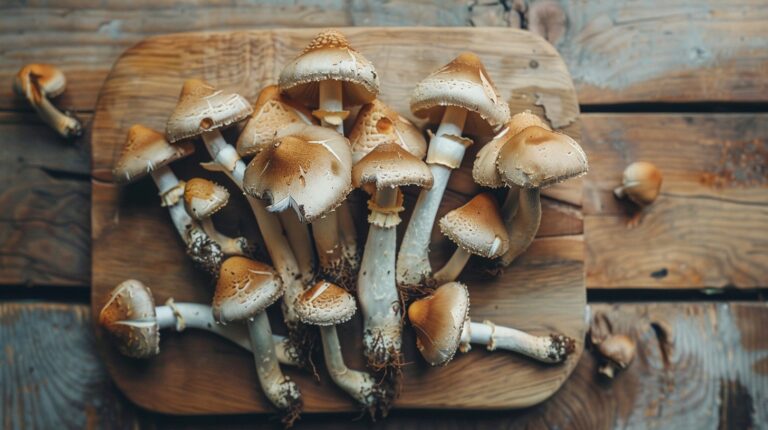You might think of it as a middle ground between our everyday mood and the intense high of severe mania. If you’ve ever found yourself buzzing with an unusual amount of energy and an uncharacteristically upbeat or agitated mood, you’ve probably gotten a small taste of what hypomania feels like.
The key difference is that with hypomania, these feelings are sustained and distinct, lasting for four days or more. This particular mood state is a signature feature of conditions like bipolar disorder and cyclothymic disorder.
Imagine your mood is like a scale. There’s the everyday mood you experience on a normal day. Then, there’s mania at the extreme end of the scale, which is like turning the volume dial up to the max. Hypomania? That’s a notch above your regular mood but not quite as extreme as mania.
It’s like your mood dial is turned up, but not to the point of causing significant disruption or requiring hospitalization.
The American Psychiatric Association, in its Diagnostic and Statistical Manual of Mental Disorders, Fifth Edition (DSM-5), defines hypomania with specific criteria. It’s not just about feeling good; it’s a persistent, elevated, or irritable mood, coupled with an unusually high level of activity or energy.
And here’s the kicker: it lasts for at least four consecutive days and is present for most of the day, almost every day. We’re not talking about the effects of a double espresso or a late-night party here. This is something different, and it’s not caused by substances, whether recreational or prescribed.
Recognizing the Signs
Often characterized by feelings of euphoria, extreme optimism, inflated self-esteem, rapid speech, racing thoughts, and increased energy. It can also involve risk-taking behaviors, such as spending sprees, impulsive sex, and impulsive business investments.
Observing for these signs can help identify hypomanic episodes. Nuances might include rapid shifts in ideas, distractibility, decreased need for sleep, and a heightened focus on goal-oriented activities. It’s crucial to notice these subtle symptoms as they can be easily mistaken for mere high spirits or excessive ambition.
Let’s consider John, a successful entrepreneur, known for his energetic personality and ambition. He usually sleeps for 7 hours, but for the past few days, he’s been sleeping just 3-4 hours, yet feels extremely energetic. He talks faster than usual, brimming with new business ideas. His family noticed these changes, and upon consulting with a mental health professional, John was diagnosed with hypomania.
Recognizing these symptoms is vital for early intervention, which can significantly impact the individual’s long-term prognosis by preventing the escalation of symptoms and mitigating potential adverse effects on their personal and professional life.
Living with Hypomania
It can have profound effects on an individual’s life and relationships. It might seem like a blessing at first due to increased productivity, but it often precedes a depressive episode and can lead to poor decision-making.
Various coping strategies can help manage hypomania. Regular physical activity, maintaining a regular sleep schedule, following a healthy diet, and minimizing caffeine and alcohol can help balance mood.
Treatment options include cognitive-behavioral therapy (CBT), which can help individuals understand and change thought patterns leading to problematic behaviors and feelings. Medication, such as mood stabilizers and atypical antipsychotics, may also be prescribed by a healthcare provider.
The Intersection With Bipolar Disorder
Key component of Bipolar II Disorder, differentiated from Bipolar I Disorder by the absence of manic episodes. Instead, the individual oscillates between depressive episodes and hypomanic episodes.
Bipolar disorder is diagnosed by a mental health professional using DSM-5 criteria, taking into account the person’s life history, behavior patterns, and mood states. When hypomania is present, it’s crucial to diagnose accurately to administer the correct treatment plan, often including a combination of medication and psychotherapy.
Individuals living with bipolar disorder and hypomania can lead a fulfilling and productive life with proper treatment and support. Personal accounts reflect the importance of early recognition, accurate diagnosis, and adherence to a comprehensive treatment plan in managing this condition successfully.
Myths and Misconceptions
There are several myths about it. Some mistake it as just a ‘phase’, while others view it as mere hyperactivity. In reality, it’s a serious mood state that can negatively impact one’s life if left unaddressed.
Stereotypes and stigma around hypomania can lead to discrimination and misunderstanding. It’s essential to foster understanding and empathy towards those experiencing hypomania to facilitate early intervention, support, and acceptance.
The Role of Caregivers and Loved Ones
Caregivers and loved ones play a significant role in supporting individuals with hypomania. They can encourage the individual to seek professional help, assist with medication adherence, and provide emotional support.
Self-care for caregivers is equally important. They should ensure to take care of their physical and mental health to effectively support their loved one.
Various resources are available for caregivers, including support groups, mental health organizations, and educational materials to better understand hypomania.
Creativity and Hypomania
Hypomania and creativity often seem to be traveling companions, with a notable number of research studies suggesting a potential connection between the two.
- The Creative Surge: Hypomania often comes with a rush of thoughts and ideas, which can feed into an individual’s creative process. This could translate to a flurry of new concepts for a painter, a burst of melodies for a songwriter, or a cascade of narratives for a novelist.
- Famous Figures: History presents us with several famous personalities who are believed to have experienced hypomania. Take, for example, the renowned artist Vincent Van Gogh. His intense and passionate paintings, such as the “Starry Night”, suggest a mind rich with emotion and vision, potentially influenced by hypomanic episodes. Similarly, the prolific writer Virginia Woolf, known for her innovative narrative techniques and profound exploration of human emotions, is believed to have experienced hypomania. These periods might have fueled her immense creativity and literary output.
- The Full Picture: While it’s important to acknowledge the potential link between hypomania and creativity, it’s also critical to maintain a balanced view. Hypomania isn’t simply a creative boost; it’s a serious mood state that can cause significant disruptions in an individual’s life. It can lead to decisions and actions that, while seeming good at the moment, can have negative long-term consequences. Therefore, celebrating the potential creative surge during hypomania should never lead to minimizing the challenges associated with it.
- The Importance of Management: Those experiencing hypomania should be aware of its potential impact on their mental health. Effective management strategies, including professional treatment and personal coping techniques, are key to harnessing this energy without letting it tip into unhealthy territory.
The Neuroscience
Like other mood states, correlates with particular brain activity patterns. Neuroimaging studies have shown changes in prefrontal cortex activity during hypomanic episodes.
Current research is focusing on identifying specific neurobiological markers of hypomania to aid in early detection and intervention. With ongoing advancements in neuroscience, we can look forward to more comprehensive insights into hypomania.
Children and Adolescents
In children and adolescents can manifest as periods of extreme happiness, high energy, hyperactivity, and less need for sleep. However, diagnosing hypomania in this age group can be challenging due to the overlap of symptoms with typical developmental behavior.
Treatment options for young people are similar to those for adults, including medication and psychotherapy, combined with robust support from family and school.
Workplace
It can impact job performance and relationships at work. The individual may seem extraordinarily productive and creative, but their impulsivity and potential irritability can strain professional relationships.
Employers should make necessary accommodations, respecting the rights of those experiencing hypomania. Colleagues can provide support by fostering an understanding and inclusive workplace environment.
Co-occurring Conditions
Often co-occurs with other conditions, including anxiety disorders, ADHD, and substance use disorders. Managing multiple mental health conditions can be challenging, but an integrative treatment approach addressing all conditions simultaneously can lead to better outcomes.
Advocacy
Advocacy plays a vital role in improving the lives of those living with hypomania. Advocacy efforts can foster understanding, reduce stigma, and push for better mental health policies.
Organizations like the National Alliance on Mental Illness (NAMI) and the Depression and Bipolar Support Alliance (DBSA) offer resources, support, and advocacy opportunities for those impacted by hypomania.
Epilogue
In conclusion, hypomania is a distinct mood state that falls between our everyday mood and the extreme highs of severe mania. It is characterized by sustained elevated or irritable mood, increased energy, rapid thoughts, and various behavioral changes.
While it may seem initially positive, hypomania can have profound effects on an individual’s life, relationships, and decision-making. Early recognition, accurate diagnosis, and comprehensive treatment are crucial for managing hypomania effectively.















